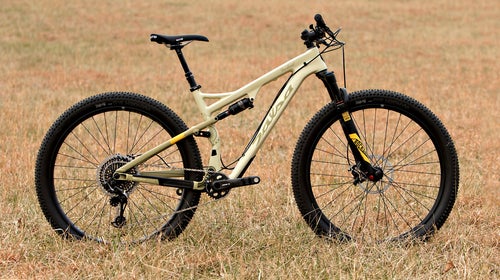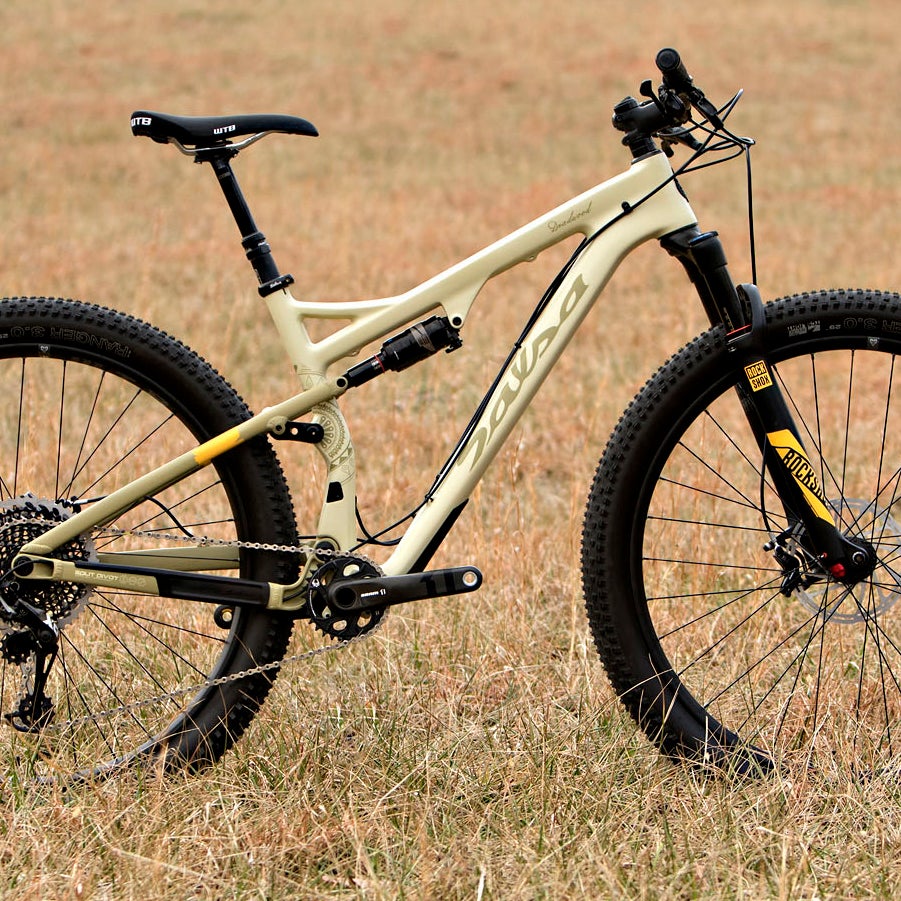Ever since the arrival of the first 29+, the Surly Krampus, I’ve been waiting impatiently for one of the larger bike companies to apply full suspension to oversize wheels. A month ago, Salsa unveiled the . We got a chance to check it out last weekend at the Sedona Mountain Bike Festival in Arizona. My initial impression: at last!
To be clear: this the first full-suspension 29+ to market, but it will be the first one that more than just a few people will be able to purchase. Salsa describes it as a mashup between its ultra-endurance Spearfish rig and the bigger-hit Redpoint trail machine. The head angle sits right between the two, at a comfortably slack 68 degrees, and the chainstays are just a bit longer than the Spearfish (449mm). With only 91mm of travel out back and a 100mm fork, the Deadwood might seem anemic on paper, but the ride is not, courtesy of those huge wheels and grippy tires.
As a refresher, 29+ puts three-inch rubber on 29-inch rims for an extra-wide tire-contact patch that provides unrivaled traction, stability, and confidence. Trek is already behind the size with its Stache 9.8, arguably the most capable hardtail mountain bike that has ever lived. But placing those big hoops in a frame with suspension has proven challenging given all the extra length involved. Thanks to the advent of the Boost 148 hub spacing, as well as Salsa’s tight Split Pivot suspension design and the bike’s short-travel nature, the Deadwood squeezed it all in.
We took the Deadwood Sus on some pretty rocky, ugly, steep trails in Sedona. It was bothered about as much as . This bike is surprisingly shreddy, with the big wheels making up for what it lacks in long suspension. Granted, the terrain in Sedona is perfect for big wheels—they skip over and blow right through square-cut edges, bedded rocks, and blocky steps that stop smaller-diameter hoops cold. The Deadwood was also nimbler and more playful than we expected: we constantly felt like it wanted to hop and skip on jumps and drops. At almost 31 pounds in the top-level spec, it’s no lightweight, but it doesn’t feel heavy or slow, and you could probably drop a couple pounds with lighter wheels.
The other thing I like about the Deadwood is that it runs just fine with standard 29er tires for a faster, even more chipper ride. The 35mm-wide rims first struck me as undersized for a plus, but they didn’t affect the big tire’s profile a bit, and the narrower setup means you can easily run 2.4-inch tires on the same wheels. With these skinnier tires, the bike should feel and ride very similar to the Spearfish. According to Salsa, if you sub in lighter wheels and a fixed post for the dropper, you could get it down to 25 pounds, which is approaching race weight. In essence, the Deadwood Sus is two bikes in one: a meaty, muscular trail-oriented ripper in its plus form, which is how we’d run it most of the time, but also an ultra-endurance cross-country machine if needed.
As always, Salsa gets the specs just right, with three models at $6,000, $4,500, and $3,800, all of which offer tons of value. It’s easy to imagine the top-spec XO1 Eagle build as the only bike I’d ever need, but time will tell once we get a long-term tester. We’re excited because the first impressions are promising, and at the very least, Salsa has finally made the bike that should have been made long ago.


